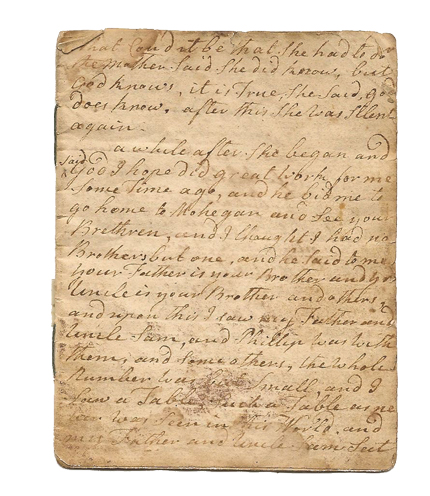More “Black Regiments” in Eighteenth-Century Massachusetts Culture
In searching for uses of the phrase “black Regiment” in eighteenth-century Boston, I came across allusions to various things besides a group of politicized clergymen, which might help to put the phrase in context.
Many British religious authors wrote about the “black Regiment” of devils or sins:
- “And the Black Regiment of Hell are ready Armed”: Rev. Peter Thacher in The Saints Victory and Triumph over Sin and Death (1696).
- “Observe that he puts his evil Thoughts in the Front, as the Leader of all this Black Regiment”: Rt. Rev. Ezekiel Hopkins in An Exposition on the Ten Commandments (1697).
- “Besure the Grand Adversary Seems often to give it in his Instructions to his black Regiments to fight neither with small nor great, but with the Ministers of the Gospel”: quoted by Rev. Thomas Skinner in The Faithful Minister’s Trials, Qualifications, Work, and Reward Described (1751).
In 1750 the Boston printer Daniel Fowle reissued a British book titled Memoirs of the Remarkable Life and Surprizing Adventures of Miss Jenny Cameron, by Archibald Arbuthnot. Or rather, that was the pseudonym the writer chose for this attack on the Jacobite claimants and one of their female supporters, in a book that’s big on insinuation and low on facts. Describing various sexual sinners, the author wrote: “The Black Regiment, I fill up with our Students in Universities, who employ more of their Time in Intrigues with pretty Girls, than they do at their Books”.
Not surprisingly, there were also racial uses of the term. Historians occasionally referred to military forces made up of men of African descent as “black Regiments,” as in Edward Lang’s History of Jamaica (1774) or the widely printed The Modern Part of an Universal History (1763). At the end of 1775 Americans quickly started to refer to Gov. Dunmore’s adherents escaping from slavery in Virginia as his “black regiment.”
I was struck by seeing the same phrase used without explanation for Native American fighters. A Narrative of the Troubles with the Indians in New-England, by the Rev. William Hubbard of Ipswich, referred in 1677 to “Philip with his black Regiment of Wompanoags.” That usage resurfaced in the 29 Apr 1771 Boston Post-Boy:
An Indian Girl belonging to Robert Dennis, of Tiverton, went away on the Night of the 10th of January last; and after a few Days, some evil minded People pretended she was dead, and gave hints that her Master and Mistress were the Cause thereof, which so inflamed all the Indians in the Neighbourhood, that they mustered together, to search for the supposed dead Girl, but to no Purpose:—I suspect there are other such references out there.
Whereupon some English Volunteers joined the Black Regiment, ranging the Woods, searching Brooks, &c, but all in vain: then to the Authority they went for a Warrant to search his House, but the Authority mistrusting their evil Intentions, took Two of his Neighbours with him and went to see Mr. Dennis, who gave them free Liberty to search his House as much as they pleased, which they did, but could not discover the least Appearance of Evil.—
The above affair having made such Noise, and caused great Clamours and uneasiness in said Dennis’s Neighbourhood; this is to give public Notice, that, after an Absence of 3 Months and Ten Days, the said Girl, or her own Accord, is safe returned home to her Mother, to the great Joy of many well-minded People.
Finally, in The Wisdom of God Manifested in the Works of the Creation, first published in England in 1691 and expanded and reprinted often after that, John Ray used the phrase “black regiment” to refer to a “Prodigious Multitude” of frogs he encountered one day in rural England. But I’m going to consider that an outlier.
Thus, well before Otis became the leading opponent of Massachusetts’s court party, there was a tradition of referring to religious ministers one didn’t like as a “black Regiment.” The same phrase also carried connotations of devils or sins, and of frightening non-white fighters. For British authors the term was always pejorative, whatever its context or meaning. Which makes it unlikely that Otis used the phrase for his supporters—unless, of course, he was speaking sardonically in private.
The words’ current resurrection by politically-minded ministers in the form of the “Black Robe(d) Regiment” therefore seems to reflect either ignorance of its historical connotations or a bold reappropriation of the term.






